- Steadies the head – to aid visual perception
- Steadies the arms – to aid fine motor skills
Skills relating to postural control and fine motor skills tend to be learned as a child develops. The ability to control posture usually moves forward in an age-related manner. For example, the ability to sit erect tends to be learned by 6 months of age. Therefore, the ability to sit up straight is then usually available in school and can be shown by being able to sit erect during handwriting. Another example of a postural skill would be standing erect, which is usually developed by 12 – 14 months of age. This skill can then be shown by stepping into jeans while dressing, or when playing “Freeze Tag” with peers. In other words, postural control represents a series of age-related motor skills that are important in school, at home, and during social interactions.
Weak Upper Body Muscles
Compromise visual perception and fine motor skills
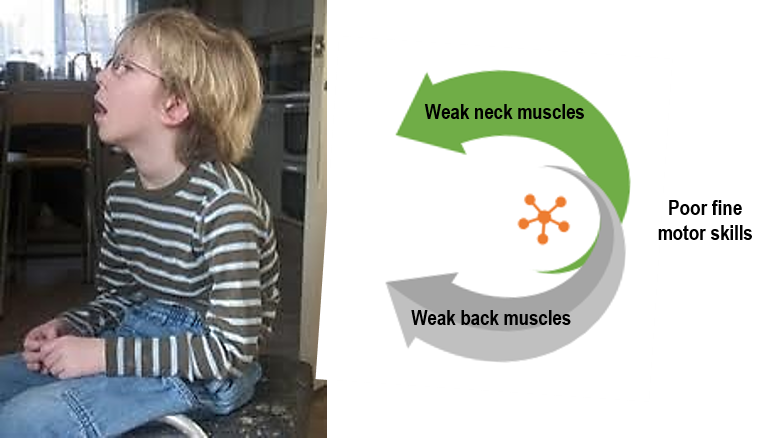
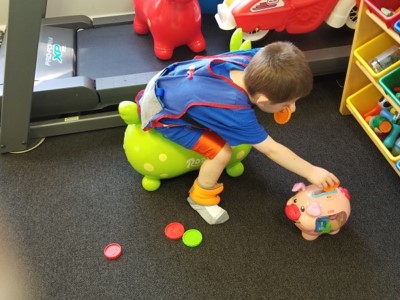
Skills relating to postural control emerge from the ability to incorporate all sides of the body while moving. Muscles of the neck, back, shoulders and hips are primarily involved in the process of developing postural control. In addition, it is typical for:
- One side of the body to become skilled in holding one side steady.
- Muscles on the other side of the body learn to initiate motor moves.
- Muscles on the front side of the body learn to work together to bend the body forward.
- Muscles on the back of the body learn to work together to push the body backward.
When muscles on the front and back of the body act with equal strength, posture tends to become better balanced. That is to say that when the posture is balanced, the muscles of the neck tend to hold the head steady and the eyes can then focus on visual perceptual activities. Also, when postural control is achieved, the muscles of the back tend to hold the upper body steady so that the arms and hands can focus on fine motor skills.
When these skills fail to develop within age-related levels, either an Occupational Therapist or a Physical Therapist may be called upon to provide resistive or corrective exercises to help a child develop the postural control needed. The resistive exercises generally involve the use of resistance that involves weighted “play” tools or toys, gravity. Sometimes even oversized sized equipment is used to help the child recruit the larger antigravity muscles of the back, shoulders, and hips.
The resistive activities are used to excite sensory receptors that lie deep within these muscles and stimulate them into action. The resulting movement usually activates a steady, stabilizing, or holding pattern that encourages the upper body to hold firm thus freeing the arms or legs to move independently.
Meanwhile, therapists and parents will usually include child-friendly manipulatives so that visual perceptual and fine motor skills are addressed as well, while postural control is accomplished.
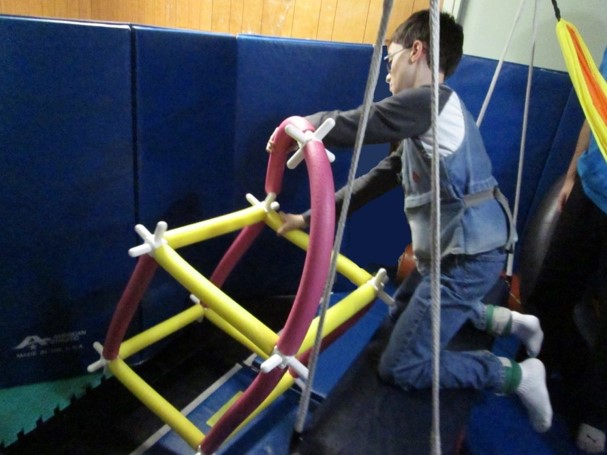
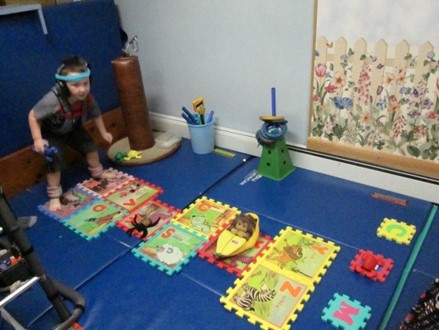
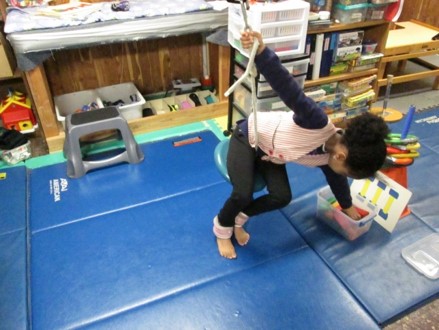
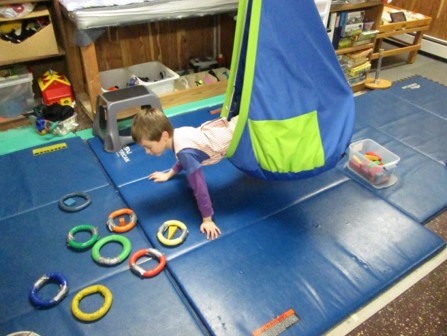


Comments are closed.